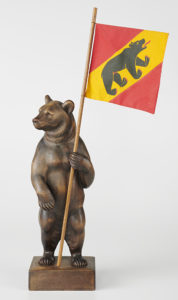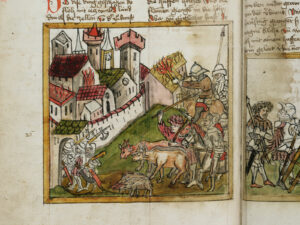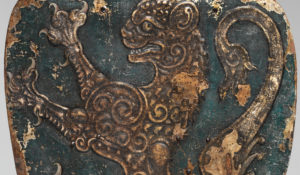
Swiss National Museum
Beastly good luck
Why pigs are lucky charms, and why it was a stroke of luck the Bernese killed a bear on their hunt…
Pigs are a popular symbol of good luck. The origins of this belief can be found in the Middle Ages, when the animals were considered a sign of prosperity. Not only were pigs omnivores and therefore relatively easy to feed with scraps, but they also reproduced very quickly, giving their owners a constant food resource. So anyone who was able to keep pigs suffered much less from the gnawing hunger that affected large sections of the population.
Even before the pig became a domesticated animal, it was a welcome addition to the dining table. Wild boars have been hunted and eaten since prehistoric times. However, it wasn’t just as a juicy piece of meat that the animals were popular. Among the Germanic tribes, the boar was a symbol of masculinity. The Celts revered it for its courage and aggressiveness, and made it a symbol of war. The boar has also made a name for itself as a heraldic animal, albeit not to the same extent as the more popular lion, eagle or bear motifs.
The latter, by the way, has adorned the coat of arms of Bern for centuries. Legend has it that Duke Berchtold V of Zähringen, founder of the city of Bern, decided on the new settlement’s name and heraldic animal by virtue of the first wild animal to be killed on the territory of the present-day urban area. Terrible to think it could’ve been a wild boar…
Viewed in that light, it was beastly good luck that the Bernese killed a bear and not a squirrel, a hare or even a wild pig.

The bear has been part of Bern’s identity for centuries.
Swiss National Museum

Duke Berchtold V of Zähringen kills the bear. Tschachtland Chronicle, around 1470.
Zentralbibliothek Zürich, Ms A 120, e-manuscripta.ch



